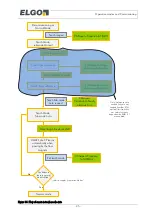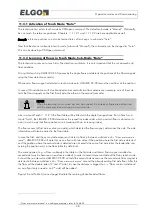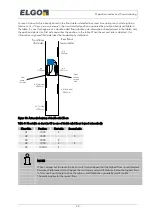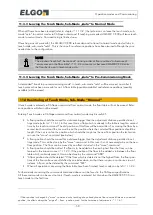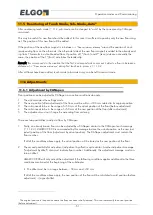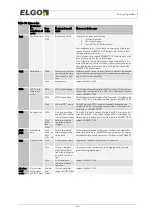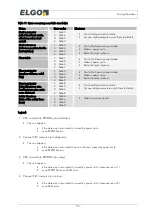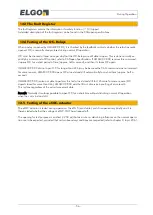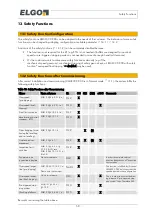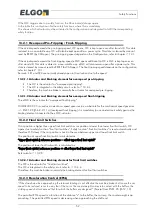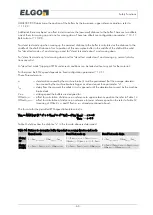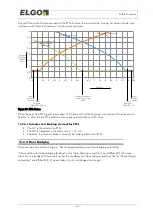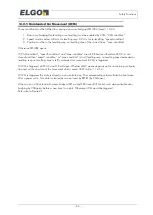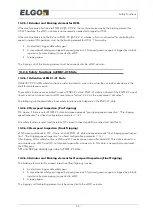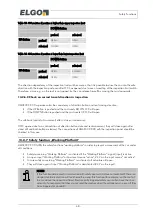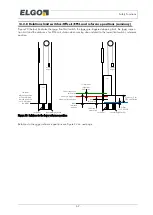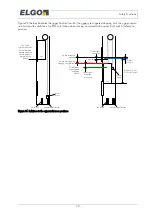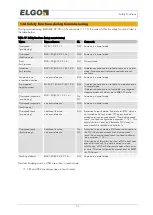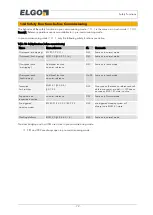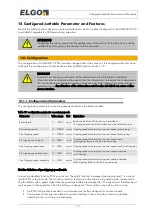
Safety Functions
- 59 -
If the SGC triggers due to a safety function, the SR actuator(s) always opens.
In the table this is only shown for the safety functions, where this is mandatory.
This shows which actuators must be activated in the configuration and integrated to fulfill the corresponding
safety function.
13.2.1
Overspeed Pre-Tripping / Final-Tripping
If the actual speed exceeds the pre-tripping speed, OC opens. OC is kept open even after stand still. This state
is stored in a non-volatile way: OC will also be kept open after a power cycle. This state is cleared by manual
reset by RESET (by CANopen). The pre-tripping speed depends on the Configuration, refer to chapter
If the actual speed exceeds the final-tripping speed, eSGC opens additional to OC. eSGC is kept open even
after stand still. This state is stored in a non-volatile way: eSGC will also remain open after a power cycle. This
state is cleared by manual reset by RESET (by CANopen). The final-tripping speed depends on the configuration,
refer to chapter
Remark: SR1 and SR2 are normally already open in this situation due to the speed.
13.2.1.1
Actuator and Braking element for overspeed pre-tripping
The OC is the actuator for “overspeed pre-tripping”.
The OC is integrated in the safety circuit, refer to
Therefore, the machine brake is normally the actuator for overspeed pre-tripping.
13.2.1.2
Actuator and Braking element for overspeed final-tripping
The eSGC is the actuator for “overspeed final-tripping”.
If LIMAX33 CP-00 is used as an electronic speed governor (as a substitute for the mechanical speed governor
=> EN81-20 §5.6.2.2.1.1a.) (overspeed final tripping) it is mandatory to use an electronic safety gear as the
braking element connected to the eSGC-actuator.
13.2.2
Final Limit Switches
If car position is higher than upper final limit switch or car position is lower than lower final limit switch, OC
opens due to safety function “final limit switches”. Safety function “final limit switches” is reset automatically and
therefore OC closes if the car position is back in the area between upper and lower final limit switch.
The position of upper final limit switch is calculated as
“upper (limit switch-) reference positions − offset upper final limit switch”
The position of lower final limit switch is calculated as
“lower (limit switch-) reference pos offset lower final limit switch”
Refer also to
13.2.2.1
Actuator and Braking element for final limit switches
The OC is the actuator for “final limit switches”.
The OC is integrated in the safety circuit, refer to
Therefore, the machine brake is normally the braking element for final limit switches
13.2.3
Deceleration Control (ETSL)
“If the slowdown when approaching the terminal landings is not effective the machine brake shall cause the car
speed to be reduced in such a way that if the car or the counterweight comes into contact with the buffers, the
striking speed shall not exceed that for which the buffers are designed.”
(Excerpt from EN81-20 §5.12.1.3)
The permitted ETSL-speed is a function of the distance “s” to the buffer, the car resp. the counterweight is ap-
proaching. The permitted ETSL-speed is decreasing when approaching the shaft end.
Summary of Contents for LIMAX33 CP-00 SERIES
Page 91: ...91 Notes...

